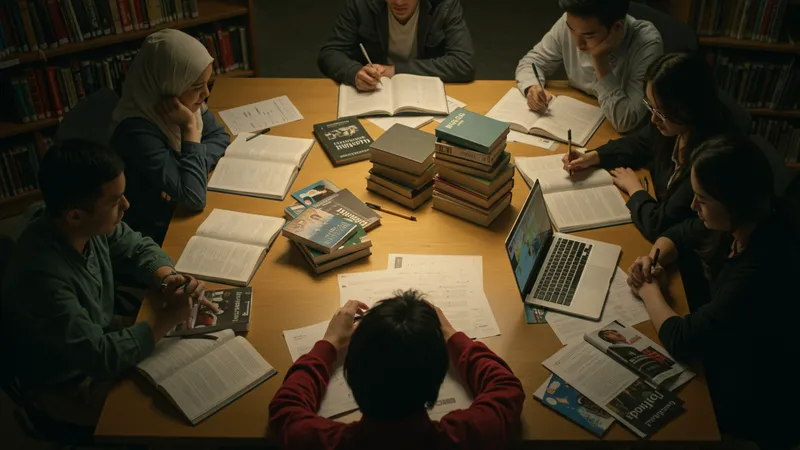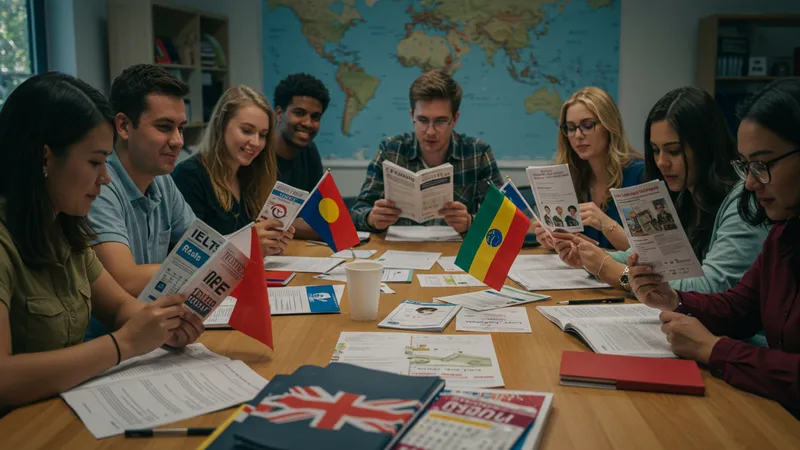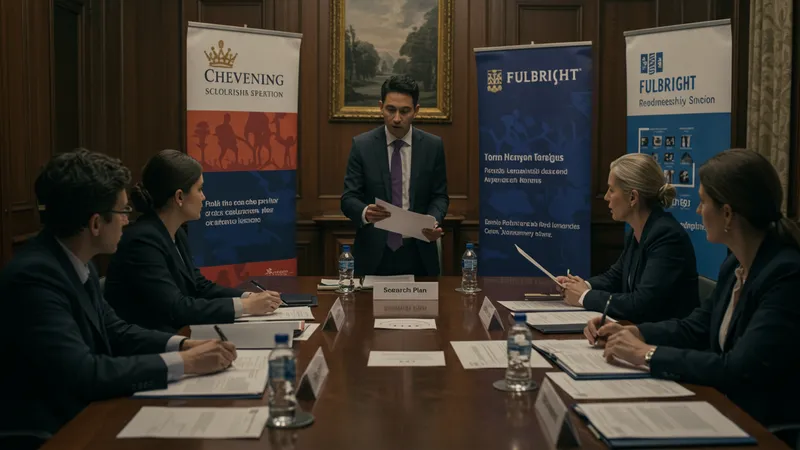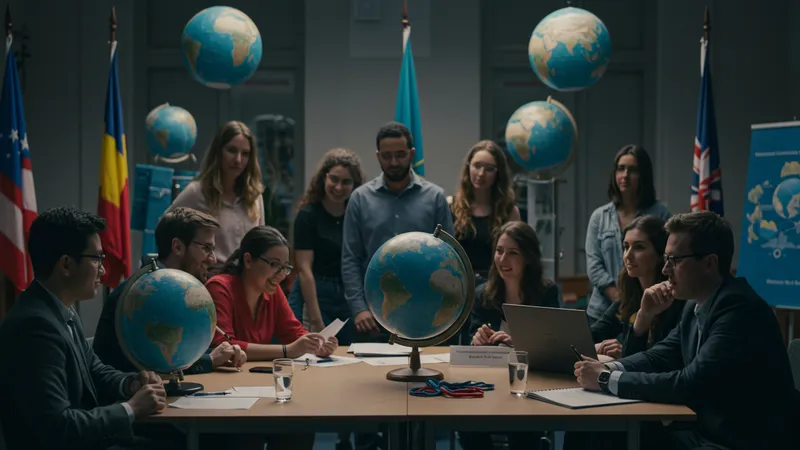

Every year, countless students dream of studying abroad or at prestigious universities, but a main obstacle often stands in the way: the significant cost of tuition and living expenses. This is where fully funded scholarships transform lives. Unlike partial financial assistance, these scholarships cover nearly all the basic education expenses, often including tuition, accommodation, travel, and sometimes even monthly stipends. Knowing how to successfully apply for fully funded scholarships worldwide can open doors that many believe out of reach.
Applying for these coveted awards involves more than just submitting a form. Understanding application timelines, eligibility criteria, documentation requirements, and the priorities of scholarship committees can make all the difference. Whether you seek a degree in engineering, social sciences, arts, or technology, the foundation of a successful application process is research and precise preparation.

Unlike merit-based grants or partial tuition waivers, fully funded scholarships aim to remove the financial barrier entirely. This allows recipients to focus on their studies instead of taking on part-time work or loans. Popular examples, like Chevening, Fulbright, and Adelaide’s ASI, receive thousands of applications annually, highlighting their global reputation and competitive selection process.
Eligibility criteria often go beyond excellent grades. Many scholarships prioritize leadership potential, extracurricular contributions, language proficiency, and the demonstration of a clear study-relevant goal. A compelling personal statement and strong recommendation letters often become your keys to standing out among applicants from every continent.
Application deadlines can differ significantly by region, discipline, and host institution. For instance, the Fulbright deadlines are often nearly a year ahead of the program start date, while Chevening’s applications might open only for a few months. Early planning and double-checking specific requirements—like language tests and document attestation—are essential for navigating this landscape successfully.
Statistically, candidates with a clear vision of how their chosen program ties into their future ambitions tend to progress further. Demonstrating unique contributions to your local or global community can strengthen your case. But there are always nuances: some scholarships may prioritize applicants from under-represented regions or disciplines, so aligning your profile to such priorities can significantly boost your chances.
The world of fully funded scholarships is competitive, but not impenetrable. By understanding the landscape, aligning your application with the priorities of the awarding body, and presenting a compelling narrative, you can dramatically enhance your prospects of receiving full financial support for your studies. The deeper details reveal even more valuable insights ahead…
Eligibility is the backbone of any successful scholarship application. Academic excellence is typically the first filter, but it is not the only one. Most fully funded programs seek evidence of leadership, community engagement, or significant challenge overcome. Some, like Chevening Scholarships, assess candidates based on their professional work experience and potential for future impact. Many also require standardized test scores, such as IELTS or GRE, particularly for competitive programs in English-speaking countries.

Nationality and residency can play a crucial role in scholarship eligibility. For example, Fulbright programs are country-specific and often target applicants who have not previously studied or worked extensively in the host country. Meanwhile, some awards focus on underrepresented regions or minority groups to promote diverse cohorts. Always read the fine print and double-check if your nationality matches the list of eligible applicants for a particular scholarship.
Language proficiency is almost always required, especially when studying abroad. Adelaide Scholarships International, for instance, mandates official proof of English proficiency via scores from recognized exams. Applicants lacking the necessary language certificates are commonly disqualified, no matter how impressive their resumes are otherwise. Preparing and scheduling these tests well in advance is essential to avoid missing crucial deadlines.
Additional requirements can include essays, research proposals, or personal interviews. Scholarships like Chevening utilize multi-stage selection, where the initial application is followed by an interview process, sometimes in front of panels of alumni. To maximize your chances, anticipate each stage and prepare accordingly—gathering documents, rehearsing responses, and ensuring your supporting materials align with the scholarship’s vision.
Each scholarship has its own set of required documentation, but certain elements are almost universal: academic transcripts, degree certificates, language proficiency results, passport copies, and letters of recommendation. The quality and clarity of these documents often influence first impressions. Double-checking document requirements for the Chevening or Fulbright programs, for example, can save considerable setbacks during the review process.

Writing a compelling personal statement or statement of purpose is one area where strong applicants distinguish themselves. Here, specificity is paramount—candidates should clearly demonstrate how their goals align with the mission of the scholarship and the impact they intend to have in their field. Tailoring each essay to the specific award, like tying your goals directly to ASI’s research focus or Chevening’s leadership aims, adds authenticity and relevance.
Letters of recommendation should be from credible sources who know your academic or professional achievements firsthand. A strong letter details not just your skills but also your character, leadership, and collaborative capabilities. For highly regarded programs such as the Fulbright Foreign Student Program, a recommendation from someone with international or cross-cultural experience can be particularly valuable.
One critical tip: always adhere strictly to formatting and submission guidelines. Using official document templates, uploading PDFs, respecting word limits, and double-checking electronic submission portals can prevent technical disqualifications. Many high-caliber scholarships see large numbers of applications disqualified for easily avoidable errors, highlighting the importance of careful attention to detail at every stage.
The selection process for fully funded scholarships is rigorous and multifaceted. Committees typically evaluate academic records, essay quality, and recommendation letters, but they also look for something more: genuine motivation. Chevening and Fulbright, for example, value candidates with a clear record of community engagement, demonstrated leadership, and a vision for how the award will shape their future contributions both locally and internationally.

Interviews play a pivotal role for finalists. These may be conducted in-person or online, often with questions designed to assess your adaptability, resilience, and alignment with the scholarship’s values. For research-based programs like ASI, having a detailed research plan and being able to communicate its significance to a non-specialist audience is a notable advantage.
Shortlisted candidates are sometimes required to submit additional paperwork or undergo background checks. This can include proof of previous awards, verification of work experience, or medical clearance. Keeping scanned, certified copies of all essential documents ready can help applicants respond efficiently during tight timelines.
Finally, it’s important to remain patient. The timeline from first application to final award notification can be several months. Meanwhile, staying engaged with your referees and occasionally checking your application status online helps you stay proactive and responsive if any follow-up is required by the selection panel.
Winning a fully funded scholarship has a transformative effect beyond just financial relief. Scholars enter elite networks of alumni, gaining access to exclusive workshops, leadership training, and ongoing mentoring. Chevening and Fulbright, for instance, maintain lifelong communities that provide ongoing professional development, collaboration chances, and international exposure.

The prestige attached to these competitive awards often opens further academic, research, or professional pathways. Graduates with proven scholarship records are more likely to secure future funding, be selected for conferences, or be recruited for leadership roles. The ripple effect of a single scholarship award can last throughout one’s career.
In addition to career prospects, recipients often bring back new perspectives to their home communities. Programs such as Fulbright encourage their scholars to share knowledge acquired abroad, fostering innovation and intercultural understanding. This transfer of expertise becomes a catalyst for change and progress in various sectors globally.
Securing a fully funded scholarship requires commitment, preparation, and strategic application. By understanding eligibility criteria, documentation, the selection process, and long-term advantages—and by meticulously tailoring each part of the application—candidates maximize their success while gaining experiences that shape futures in ways far beyond initial expectations.